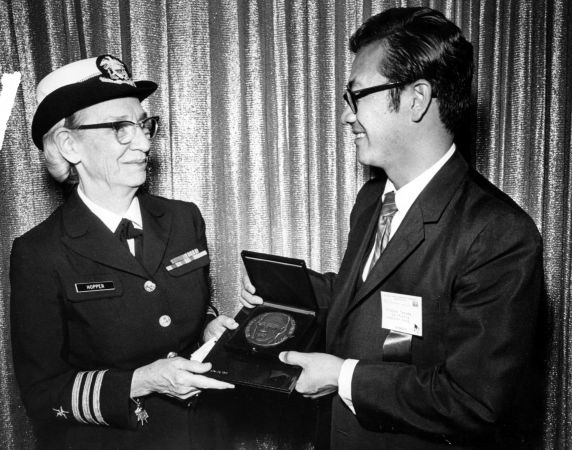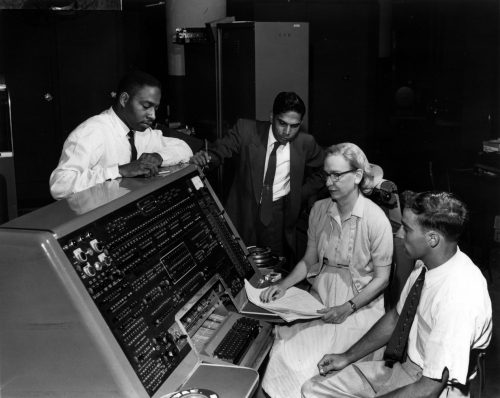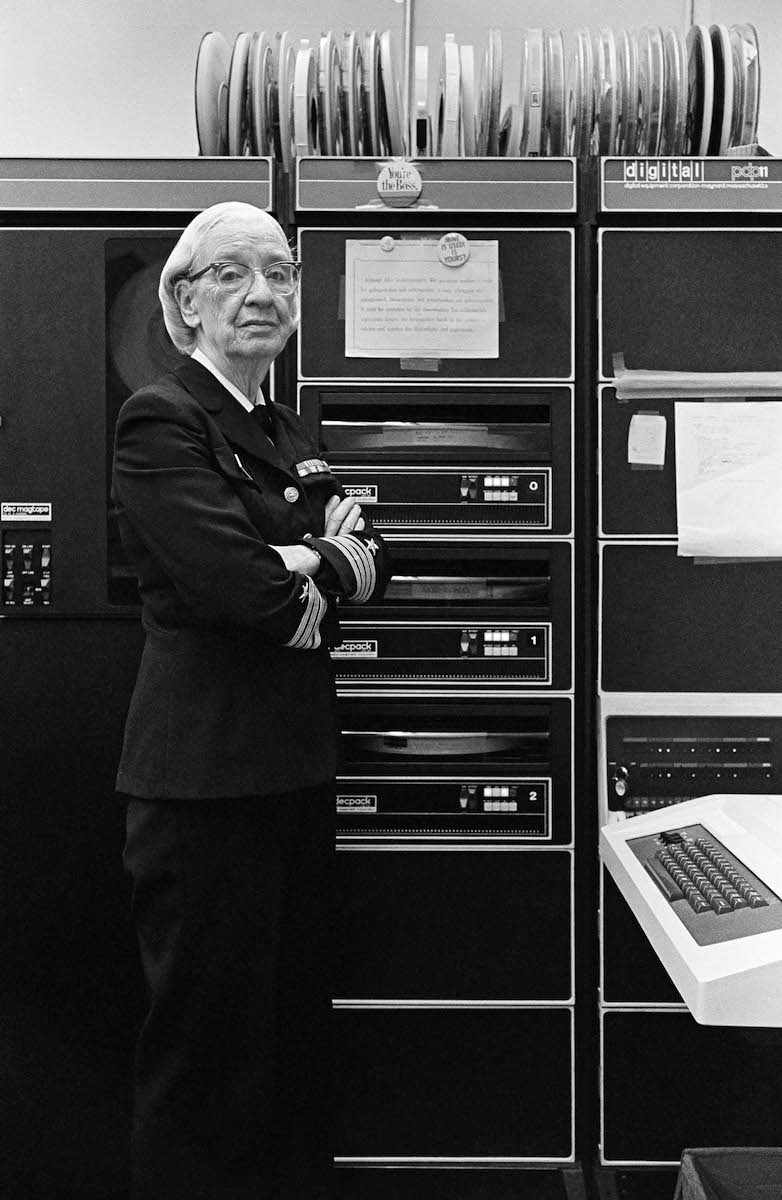






Grace Brewster Murray Hopper was a computer scientist, mathematician, and one of the few women at the time to reach the rank of Rear Admiral in the Navy. She is celebrated even today for her unique and significant contributions to the field of computer science.







Grace Brewster Murray Hopper was born on , in New York City.
World War 1
The National Service School was organized by the Women’s Naval Service to train women for duties in time of war and national disasters.
19th ammendment certified, granting women the right to vote in the U.S.
BA in Mathematics and Physics from Vassar College.
Master’s in Mathematics from Yale University.
Grace Hopper taught mathematics at Vassar College for over a decade before her military service.
Hopper earned her Ph.D. in mathematics from Yale University, becoming one of the first women to do so at this time.
Attack on Pearl Harbor.
Hopper worked on the Mark I project with Harvard after she joined the Navy Reserves during World War II as a lieutenant.
Hopper worked on the Harvard Mark I (IBM Automatic Sequence Controlled Calculator), one of the first large-scale computers. She contributed to its programming and operations.
Wrote the first computer manual, "A Manual of Operation for the Automatic Sequence Controlled Calculator.
D-Day: Allied forces land in Normandy, France.
End of World War II.
The United States drops atomic bombs on Hiroshima and Nagasaki.
The Truman Doctrine is announced, outlining U.S. policy to contain communism.
Women are allowed to serve in the armed forces that is a regular permanent status after President Truman signed the Women's Armed Service Integration Act.
Hopper joined the Eckert-Mauchly Computer Corporation, where she worked on the UNIVAC I, one of the first commercially available computers.
Korean war begins.
Hopper invented the A-0 System, the first compiler, which translated high-level programming languages into machine code, laying the foundation for modern compilers, simplifying programming by converting written instructions into machine-readable code.
The Civil Rights Movement begins.
Hopper developed Flow-Matic, a programming language designed for business applications, which influenced the creation of COBOL.
Grace Hopper contributed significantly to the development of COBOL, also known as, Common Buisiness-Oriented Language. COBOL use was widely accepted in buisness, finance, and administrative purposes making programming more accessible even to this day.
Vietnam War begins.
Hopper popularized the term "debugging" when her team found an actual moth causing a malfunction in the Mark II computer at Harvard University.
The Civil Rights Act abolishes segregation in the United States.
Voting Rights Act of 1965 secured voting rights for adult citizens of all races and genders.
Grace Hopper was promoted to commander in the U.S. Navy, reflecting her significant contributions to computing and her military service.
Grace Hopper initially retired but, was recalled to active duty in 1967.
Hopper served in the Navy as the director of the Programming Languages Group.
Hopper initially retires from the Navy as a commander, but continued to work as a consultant for computer science.
The Vietnam War ends.
Hopper is promoted to Rear Admiral in the U.S. Navy, making her one of the few women to at this time to achieve something like this in the armed forces.
Officially retired.
End of Iran-Iraq War.
Tim Berners-Lee invented the World Wide Web.
End of cold war
The U.S. invasion of Panama begins.
The Gulf War begins
Grace Hopper passed away on at 85 years old. Her contributions continues to influence computer science and programming leaving behind an impressive legacy.
National Medal of Technology.
The Gulf War end.